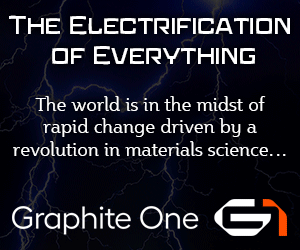U.S. GoldMining confirms Whistler core
Drills 574 meters of 1.06 g/t gold-equivalent at Alaska deposit North of 60 Mining News - January 17, 2024
Last updated 1/26/2024 at 11:44am
U.S. GoldMining Inc. Jan. 16 reported that its inaugural drill program at Whistler confirmed the high-grade core and expanded upon the main deposit on this gold-copper project 105 miles northwest of Anchorage, Alaska.
"We are very pleased with the results from our first round of drilling at the project, which supports the robustness of our geological model, demonstrates improved continuity of high-grade mineralization and has successfully confirmed the presence of additional porphyry intrusions beyond the existing defined deposits," said U.S. GoldMining CEO Tim Smith.
U.S. GoldMining was formed specifically to advance exploration and development of the 53,700-acre Whistler project that was acquired by its parent company, GoldMining Inc., in 2015.
According to a 2021 calculation, the Whistler and nearby Raintree deposits host 115.5 million metric tons of open-pit mineable indicated resource averaging 0.5 grams per metric ton (1.87 million ounces) gold, 2.15 g/t (8 million oz) silver, and 0.16% (414.3 million pounds) copper. In addition, the Whistler, Raintree, and Island Mountain deposits host 277.2 million metric tons of open-pit mineable inferred resource averaging 0.58 g/t (3.64 million oz) gold, 1.44 g/t (12.9 million oz) silver; and 0.1% (604 million lb) copper.
These resources are based on 70,247 meters of diamond drilling completed in 257 holes from 1986 to the end of 2011. Of these holes, 52 were drilled in the Whistler deposit area, 94 holes in the Raintree West area, and 36 holes in the Island Mountain area. Another 75 holes were drilled across the wider property.
U.S. GoldMining, which listed on Nasdaq last April with a US$20 million public offering, launched an initial exploration program at Whistler in August that included 2,234 meters of drilling in four holes.
Highlights from this drilling include:
• 241 meters averaging 0.33 g/t gold, 1.86 g/t silver, and 0.16% copper from a depth of two meters in hole WH23-01.
• 142.3 meters averaging 0.17 g/t gold, 1.05 g/t silver, and 0.21% copper from a depth of 305 meters in hole WH23-02.
• 547.2 meters averaging 0.77 g/t gold, 1.55 g/t gold, and 0.17% copper from a depth of 53 meters to the bottom of the hole WH23-03.
Holes WH23-01 and WH23-02 were focused on upgrading and expanding mineralization along the southern margins of the Whistler deposit.
WH23-01 confirmed that mineralization extends to surface on the south side of the Whistler Ridge, a steep slope that presents challenges for building drill platforms and which was subsequently under-drilled in the past.
WH23-02 expanded Whistler approximately 100 meters to the south of previously drilled mineralization in the southwest sector of the deposit.
WH23-03 infilled an area of previously sparse drilling and lower confidence resource classification on the southern margin of the Whistler deposit's higher-grade core. Mineralization was cut from near-surface to the bottom of the hole, which was terminated due to a freeze-up of the water supply for the rig. The company plans to deepen the hole when drilling resumes later this year.
"The 2023 Whistler drill program returned the longest drill intercept of consistent mineralization ever recorded at the project: 547 meters at 1.06 g/t AuEq (gold-equivalent) in WH23-03, which ended in strong mineralization and remains open at depth," said U.S. GoldMining Chairman Alastair Still. "Drilling also indicated an expansion of the Whistler deposit to the southwest, which remains open along strike and at depth, and we have confirmed confidence that mineralization extends to surface in two of the three drill holes."
A fourth hole, WH23-04, was drilled at the Raintree South target about 1,000 meters south of the Whistler deposit. While the drill hole confirmed the geophysical modeling and targeting methodology, core logging indicates weak to absent veining and alteration, which is typical of porphyry copper-gold mineralization at Whistler.
"In general our team has made significant breakthroughs in the geological model over the past year, completed the first drill program at the project in over a decade, and delivered exceptional drill results that helped us to achieve our overall objective in 2023 of 'rediscovering' the Whistler project, one of the largest undeveloped gold-copper resources in the United States not yet in the hands of a major," said Still.











Reader Comments(0)